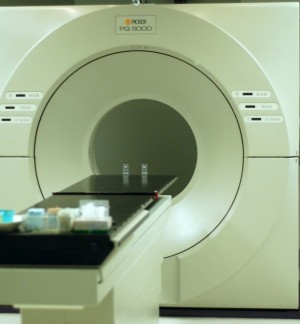According to the American College of Radiology, the test delivers approximately the same amount of radiation a person gets from the sun in 2 years and could cause one additional fatal cancer for each thousand people tested.
As with most cancer screening, the risks also include a false positive scan, which can result in a fearful, anxious patient. The imaging may reveal other, unexpected concerns outside the lung. Either of those results can lead to invasive follow up procedures, such as biopsy -- “a significant risk” for patients, said UCLA Radiology Professor Denise Aberle in an interview. Aberle was one of a handful of authors of the NLST results reported in NEJM last year.
The magnitude of the problem creates tremendous pressure for solutions. Lung cancer kills 23 percent of Californians who die of cancer. Since most people with early stage lung cancer don’t suspect a thing, until now the disease has been diagnosed almost exclusively in its late stages. This is particularly true among people of lower socio-economic status. Despite lower smoking rates, African Americans are more likely to die of lung cancer than whites, for example.
The cost of a spiral CT, according to the National Lung Cancer Partnership, “varies but is usually in the range of $300 to $500 and Medicare may not currently pay for this test “because the guidelines are so new.”
But Medicare may not cover this test for another reason, too: the value of the test is still controversial to policy makers who must consider the health of whole populations. Some limitations of the NLST may mean the data is not perfectly applicable to the real world.
Still, the Department of Veterans Affairs (VA), for example, has agreed to move forward on CT screening for veterans at high risk for lung cancer – a move Aberle supports. But if Medicare and other commercial insurers do not cover the cost of the test only people who can pay out of pocket will get it. People without means to pay for the test “will be disproportionately adversely affected by lung cancer,” Aberle said.
With budgets already strained, the policy decisions about coverage for CT lung cancer screening will be complicated. Lung cancer is stigmatized, in part because much of lung cancer is preventable. And California’s efforts to reduce smoking were given a poor grade last year by the American Lung Association, indicating substantial room for improvement.
UCSF Radiology Professor Rebecca Smith-Bindman examined the NLST data and is one author of the JAMA paper. In an email, she said the decision about whether or not CT lung cancer screening should be a covered expense is a discussion that “needs to weigh the benefits and costs and competing demands. … If the goal was to reduce lung cancer deaths, probably investing in smoking cessation would be much more effective.”
Aberle believes both approaches are necessary. “We will have a hugely missed opportunity if screening is not 'tied at the waist' with smoking cessation,” she said. "That’s a powerful combination.”
This post was updated to show that some insurers cover the test. Prior versions of this post had indicated that only the VA covered the test.
